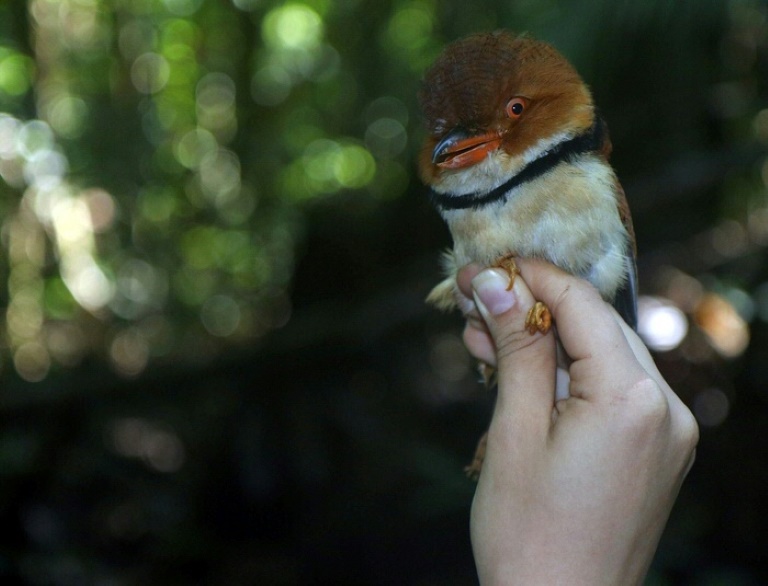Even the wildest parts of the Amazon untouched by humanity are being impacted by anthropogenic climate change, according to new research.
Hotter, drier conditions over the past four decades are decreasing the rainforest birds’ body size while increasing their wingspans, a study published in the journal Science Advances said Friday.
The changes are thought to be a response to nutritional and physiological challenges, especially during the June to November dry season.
“In the middle of this pristine Amazon rainforest, we are seeing the global effects of climate change caused by people,” Vitek Jirinec, an associate ecologist at the Integral Ecology Research Center, said in a statement.
Jirinec and colleagues analyzed data collected on more than 15,000 birds that were caught, measured, weighed, and tagged over the course of 40 years of field work.
They found that nearly all the birds had become lighter since the 1980s.
Most species lost an average of two percent of body weight every decade, meaning a bird species that would have weighed 30 grams in the 1980s would now average 27.6 grams.
The data was not tied to a specific site but rather collected from a large range of the rainforest, meaning the phenomenon is ubiquitous.
In all, the scientists investigated 77 species whose habitats ranged from the cool, dark forest floor to the sunlit and warmer midstory — the forest’s middle layer of vegetation.
The birds at the highest sections of the midstory, which fly most and are more exposed to heat, had the most pronounced changes in body weight and wing size
The team hypothesized this was an adaptation to energy pressures — for example decreased availability of fruit and insect resources — and also to thermal stress.
Longer wings, and a reduced mass-to-wing ratio, produce more efficient flight — similar to how a glider plane with a slim body and long wings can soar with less energy.
A higher mass-to-wing ratio requires birds to flap faster to stay aloft, using more energy and producing more metabolic heat.
These species “are fairly fine-tuned, so when everyone in the population is a couple of grams smaller, it’s significant,” said co-author Philip Stouffer of Louisiana State University.
How well the Amazonian birds deal with increasingly hotter and drier conditions in the future remains an open question.
The authors added the same effect they recorded is likely to be true of other species across the world living in extreme environments.
“This is undoubtedly happening all over and probably not just with birds,” Stouffer said.









